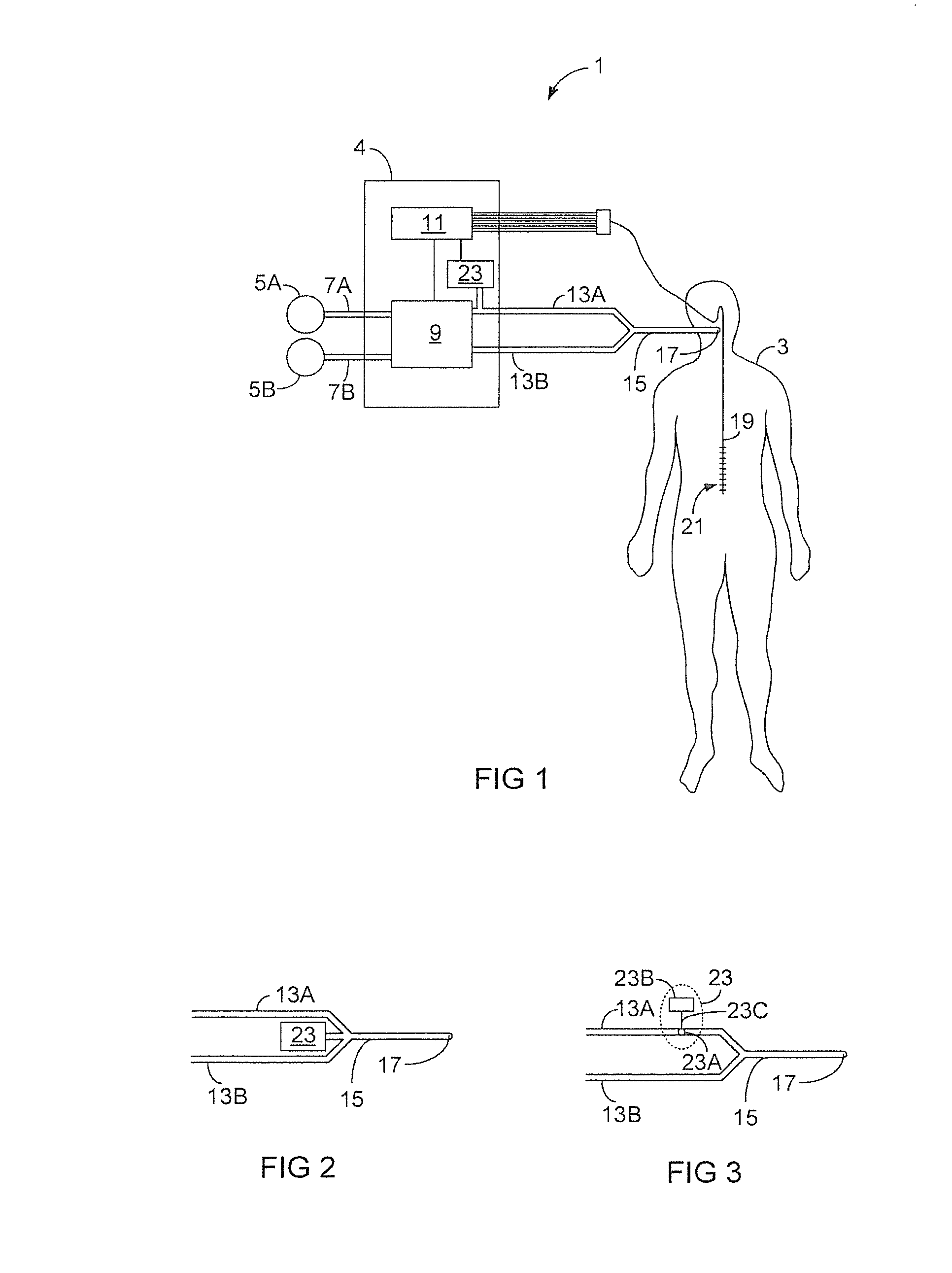Neurally triggered support ventilation during hfo ventilation
a support ventilation and hfo technology, applied in the field of ventilating systems, can solve the problems of insufficient gas supply of bias systems, inconvenient operation, and inability to accurately control the flow rate of air,
- Summary
- Abstract
- Description
- Claims
- Application Information
AI Technical Summary
Benefits of technology
Problems solved by technology
Method used
Image
Examples
Embodiment Construction
[0029]The present invention strives to solve the problem of how to provide patient-triggered support ventilation to a spontaneously breathing patient during ongoing high frequency ventilation (HFV). As described above, HFV is a ventilation mode in which very small tidal volumes are delivered at high frequency, typically in the frequency range of 5 to 20 Hz. The rapidly fluctuating pressure in HFV systems makes it difficult to implement precise and robust pneumatic triggering of the support ventilation.
[0030]Relevant parameters defining the characteristics of the HFO ventilation include MAP (mean airway pressure), the oscillation frequency and the amplitudes of the oscillating pressure profile. As well known in the art, there are several subcategories of HFV. One subcategory of HFV is high frequency oscillatory ventilation (HFOV), sometimes also referred to as active high frequency ventilation (HFV-A). In HFOV, the oscillating pressure profile applied to the patient oscillates betwee...
PUM
 Login to View More
Login to View More Abstract
Description
Claims
Application Information
 Login to View More
Login to View More - R&D
- Intellectual Property
- Life Sciences
- Materials
- Tech Scout
- Unparalleled Data Quality
- Higher Quality Content
- 60% Fewer Hallucinations
Browse by: Latest US Patents, China's latest patents, Technical Efficacy Thesaurus, Application Domain, Technology Topic, Popular Technical Reports.
© 2025 PatSnap. All rights reserved.Legal|Privacy policy|Modern Slavery Act Transparency Statement|Sitemap|About US| Contact US: help@patsnap.com


